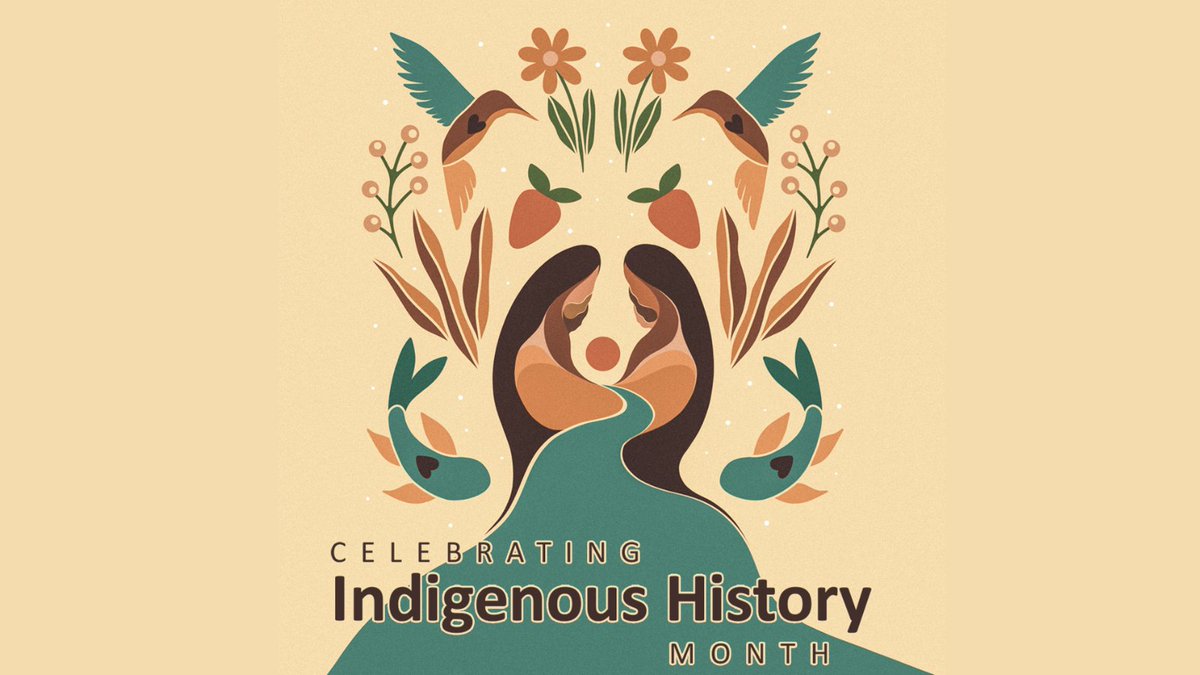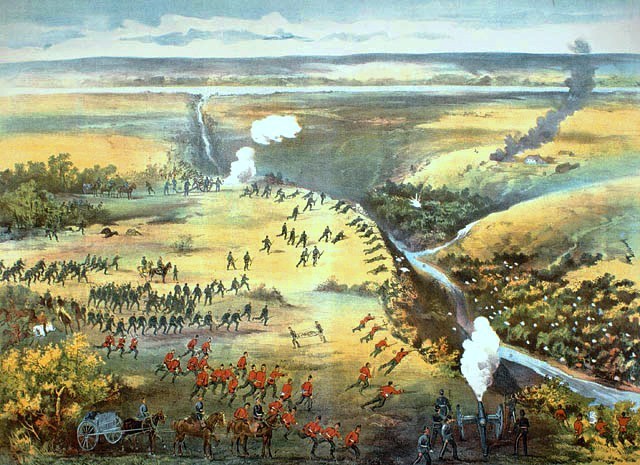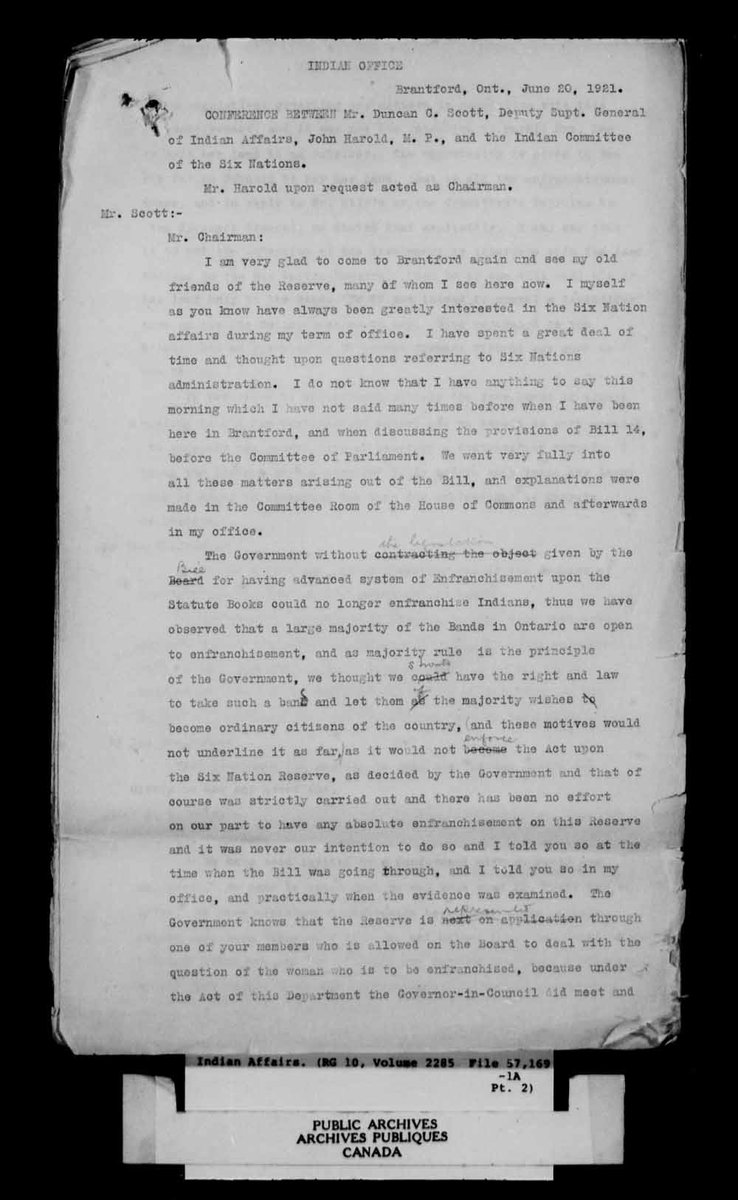Discover and read the best of Twitter Threads about #IndigenousHistoryMonth
Most recents (16)
It is #IndigenousHistoryMonth and this is the story of Pitseolak Ashoona, one of Canada's most celebrated artists.
Pitseolak was born around 1904 on Nottingham Island (south of Baffin Island). Her name means sea pigeon in Inuktitut. Her family lived a traditional life.
🧵1/5
Pitseolak was born around 1904 on Nottingham Island (south of Baffin Island). Her name means sea pigeon in Inuktitut. Her family lived a traditional life.
🧵1/5

It is #IndigenousHistoryMonth and this is the story of Metis leader Gabriel Dumont!
Gabriel Dumont was born in December 1837 near present-day Winnipeg.
At the age of 13, he fought in the Battle of Grand Coteau against the Sioux where he proved his bravery in battle.
🧵1/5
Gabriel Dumont was born in December 1837 near present-day Winnipeg.
At the age of 13, he fought in the Battle of Grand Coteau against the Sioux where he proved his bravery in battle.
🧵1/5

It is #IndigenousHistoryMonth and this is the story of actor, singer & humanitarian Tom Jackson!
Tom Jackson was born on the One Arrow Reserve near Batoche, Saskatchewan on Oct. 27, 1948.
After moving to Winnipeg when he was 14, he dropped out of school a year later.
🧵1/5
Tom Jackson was born on the One Arrow Reserve near Batoche, Saskatchewan on Oct. 27, 1948.
After moving to Winnipeg when he was 14, he dropped out of school a year later.
🧵1/5

It is #IndigenousHistoryMonth and this is the story of Keish, the man who started the Klondike Gold Rush
Keish was born around 1855 near Bennett Lake, Yukon, His name Keish means wolf.
A member of the Tagish people, his father was Kaachgaawaa, a chief.
🧵1/6
Keish was born around 1855 near Bennett Lake, Yukon, His name Keish means wolf.
A member of the Tagish people, his father was Kaachgaawaa, a chief.
🧵1/6

It is #IndigenousHistoryMonth and this is the story of Sgt. Tommy Prince, one of Canada's most decorated soldiers.
Tommy Prince was born in Petersfield, Manitoba on Oct. 15, 1915. His family had a long military tradition, which he would carry in his adult life.
🧵1/8
Tommy Prince was born in Petersfield, Manitoba on Oct. 15, 1915. His family had a long military tradition, which he would carry in his adult life.
🧵1/8

It is #IndigenousHistoryMonth and this is the story of Mistahi-maskwa, also known as Big Bear.
Big Bear was born around 1825 near Jackfish Lake in present-day Saskatchewan. His father was a minor chief of 80 Cree-Saulteaux people & a large influence of Big Bear.
🧵1/5
Big Bear was born around 1825 near Jackfish Lake in present-day Saskatchewan. His father was a minor chief of 80 Cree-Saulteaux people & a large influence of Big Bear.
🧵1/5

It is #IndigenousHistoryMonth and this is the story of Kenojuak Ashevak, one of Canada's greatest artists!
Kenojuak Ashevak was born on Oct. 3, 1927 in an Inuit camp on the southern coast of Baffin Island. Her father was a fur trader and she was named for her grandfather.
🧵1/6
Kenojuak Ashevak was born on Oct. 3, 1927 in an Inuit camp on the southern coast of Baffin Island. Her father was a fur trader and she was named for her grandfather.
🧵1/6

It is #IndigenousHistoryMonth and this is the story of Tom Longboat, the greatest distance runner in Canadian history!
Tom Longboat was born on the Six Nations Reserve on July 4, 1886. In 1901, fellow reserve resident Bill Davis ran in the Boston Marathon, inspiring Tom.
🧵1/6
Tom Longboat was born on the Six Nations Reserve on July 4, 1886. In 1901, fellow reserve resident Bill Davis ran in the Boston Marathon, inspiring Tom.
🧵1/6

It is #IndigenousHistoryMonth and this is the story of Alanis Obomsawin, one of Canada's top filmmakers!
Alanis Obomsawin was born on Aug. 31, 1932 in New Hampshire. When she was 6 months old, her family moved to the Odanak Reserve near Sorel, Quebec.
🧵1/5
Alanis Obomsawin was born on Aug. 31, 1932 in New Hampshire. When she was 6 months old, her family moved to the Odanak Reserve near Sorel, Quebec.
🧵1/5

It is #IndigenousHistoryMonth and this is the story of Chief Crowfoot!
Crowfoot (Isapo-Muxika) was born in 1830 in what is now southern-Alberta.
It is known he fought in at least 19 battles and was well-respected for his skills as a warrior and leader.
🧵1/5
Crowfoot (Isapo-Muxika) was born in 1830 in what is now southern-Alberta.
It is known he fought in at least 19 battles and was well-respected for his skills as a warrior and leader.
🧵1/5

Journalist Dom Phillips, a regular contributor to @guardian, has been missing in the Javari Valley in the #Brazilian Amazon for more than 30 hours after death threats to his indigenista companion, Bruno Pereira, who is also missing #IndigenousHistoryMonth theguardian.com/media/2022/jun…
'We knew it was a dangerous place but Dom really believed it’s possible to safeguard the nature & the livelihood of the Indigenous people. We urge Brazilian authorities to do all they can to help”
Appeal by the sister of missing journalist Dom Phillips
theguardian.com/world/video/20…
Appeal by the sister of missing journalist Dom Phillips
theguardian.com/world/video/20…
A record number of activists working to protect the environment & land rights were murdered in 2020 & 2019 according to @Global_Witness
Almost a third of the murders were reportedly linked to resource exploitation
Indigenous populations bear the brunt of the deadly violence



Almost a third of the murders were reportedly linked to resource exploitation
Indigenous populations bear the brunt of the deadly violence




June is #IndigenousHistoryMonth. Throughout June, all municipalities within the Region will be sharing resources, and stories to learn more about the history of Indigenous peoples, and to celebrate Indigenous culture and resilience. We encourage you to follow along and read more: 

99 years ago, June 20, 1921, the Six Nations (Haudensosaunee or Iroquois) council met with Canadian govt officials to try to stop the erosion of their Grand River land base through Cdn channels. Canada stonewalled & the Six Nations took their appeal global. Thread on the meeting: 

With the strong #BlackLivesMatter and #IndigenousLivesMatter movements, I thought I'd help by addressing some of the popularized misconceptions around Indigenous people and prairie farming. We know that serious systemic racism exists, and it exists strongly in ag communities.
First: the history of First Nations within the space we now know as western Canada (prairie, boreal, and cordillera) spans 10,000+ years. It's deep, and is complex with many layers. It cannot and should never be dismissed by a sentence or two, or a paragraph.
Yet that's typically what happens in a local history book, where 'history' begins with white European settlement. That's the first erasure: when we spend energy proudly promoting 'pioneer' history, we deliberately dismiss thousands of generations in this landscape.
We’re marking #IndigenousHistoryMonth by celebrating some of the incredible Indigenous musicians on Turtle Island — people who have entertained and educated through music.
Follow this thread all month, and check out our project Game Changers for more: bit.ly/371DMG6
Follow this thread all month, and check out our project Game Changers for more: bit.ly/371DMG6

.@BuffySteMarie is the kokum of rock.
With monumental anti-war anthems like Universal Soldier, Buffy has never shied away from bringing politics into her art. bit.ly/CBCMGC60s
With monumental anti-war anthems like Universal Soldier, Buffy has never shied away from bringing politics into her art. bit.ly/CBCMGC60s

Her music and support of Red Power movements in the 1970s resulted in her being blacklisted, but it didn't stop her.
On top of Buffy’s decades of awards and accolades, in 2015, at 74, she won the @PolarisMusicPrize for her album Power in the Blood. bit.ly/CBCMGC60s
On top of Buffy’s decades of awards and accolades, in 2015, at 74, she won the @PolarisMusicPrize for her album Power in the Blood. bit.ly/CBCMGC60s

THREAD: Our read-aloud today was M is for Mustache (Flamingo Rampant, 2017) by @theloudlady, with illustrations by Marisa Firebaugh. Our song was Somewhere Over The Rainbow (1939).
MIFM is one of my two favourite books to launch #PrideMonth #TDSBPride 1/4
MIFM is one of my two favourite books to launch #PrideMonth #TDSBPride 1/4
The other is 47,000 Beads (Flamingo Rampant, 2017) by @KojaAdeyoha and @angeladeyoha, with illustrations by
@HollyMcGillis, which @sbearbergman read at our @WBurgessTDSB Virtual Pride Assembly on June 1st. June is also #IndigenousHistoryMonth. 2/4
@HollyMcGillis, which @sbearbergman read at our @WBurgessTDSB Virtual Pride Assembly on June 1st. June is also #IndigenousHistoryMonth. 2/4


























